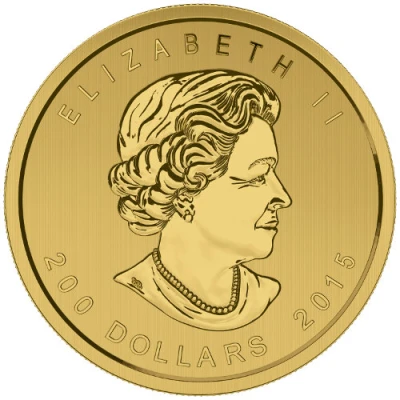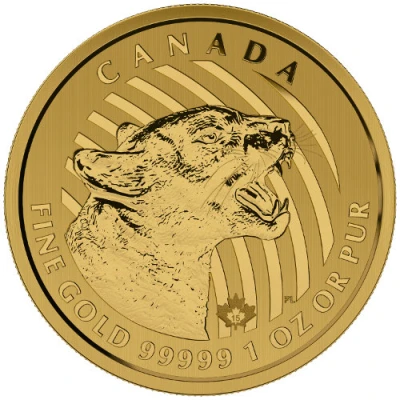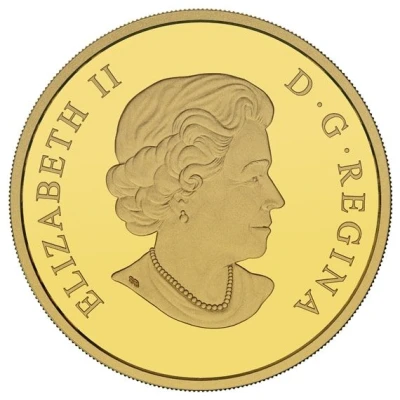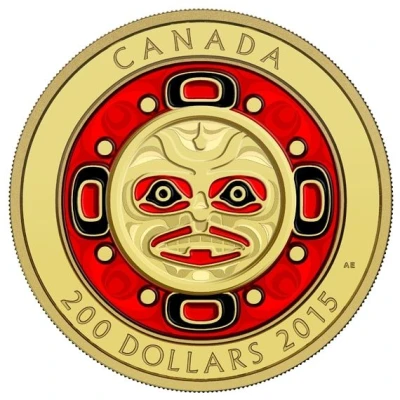
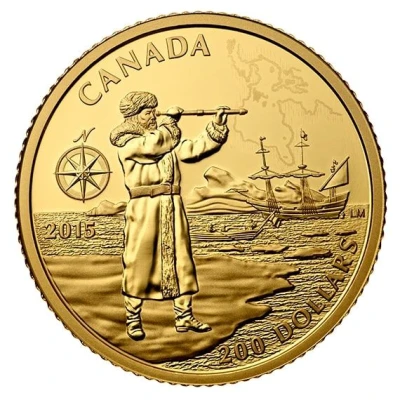

© The Coin Shoppe
200 Dollars - Elizabeth II Henry Hudson
2015 year| Gold (.9999) | 15.43 g | 29 mm |
| Issuer | Canada |
|---|---|
| Queen | Elizabeth II (1952-2022) |
| Type | Non-circulating coin |
| Year | 2015 |
| Value | 200 Dollars 200 CAD = USD 148 |
| Currency | Dollar (1858-date) |
| Composition | Gold (.9999) |
| Weight | 15.43 g |
| Diameter | 29 mm |
| Thickness | 1.6 mm |
| Shape | Round |
| Technique | Milled |
| Orientation | Medal alignment ↑↑ |
| Updated | 2024-10-04 |
| Numista | N#377448 |
|---|---|
| Rarity index | 100% |
Reverse
Henry Hudson standing right, ship in background.
Script: Latin
Lettering:
CANADA
2015
200 DOLLARS
LM
Designer: Laurie McGaw
Edge
Serrated
Comment
Renowned for his exploration work that led to the discovery of Hudson Bay, and infamous for his inexplicable disappearance after his crew mutinied, Henry Hudson is one of the most esteemed and mysterious explorers of what is now Canada. This fourth issue in the Royal Canadian Mint's popular Great Explorers of Canada series pays tribute to him.About Henry Hudson
Henry Hudson is almost as famous for his mysterious disappearance as for his exploration. Records tell us little about his life prior to 1607, but he is thought to have been born in England between 1560 and 1570, probably to a well-off and well-educated family. He began his career as a navigator at a young age.
By his forties, his reputation as a talented navigator was well established, and he devoted his great explorations of 1607, 1608 and 1609 to the quest for an eastward passage from Europe to China, via the Arctic Circle.
- On his third expedition, in 1609, this time for the Dutch East India Company, he changed course and headed west for North America. Armed with information on this part of the globe gleaned from the reports of expeditions led by his precursors, he set out in search of the famous and elusive Northwest Passage.
- It was on this voyage in 1609 that Hudson reached what is today the Hudson River, named in his honor, in New York State. Although the river had been recorded in the notebooks of explorer Verrazzano almost a century earlier, it was Hudson who explored it in depth.
- Hudson also identified Manhattan Island as a suitable location for agriculture. In the
20 years, Dutch settlers named their colony New Amsterdam, which later became New York.
In 1610, the British East India Company and the Virginia Company commissioned him to explore the coves near Iceland and Greenland. It was with great enthusiasm that the explorer and his crew found what is now known as Hudson Strait, west of the southern tip of Greenland. This strait had been noted by Martin Frobisher, among others, but driven by exceptional motivation and courage, Hudson traversed this treacherous route to the end. It took them six weeks to reach the inner sea of today's Hudson Bay.
Initially convinced he was in the Pacific, Hudson pushed on despite the exhaustion of his men and the need to resupply on the game-rich shores. After a rigorous exploration of the region, Hudson and his men had to conclude that they had not reached the Pacific. But as the season advanced, their ship was trapped by ice, and they were forced to spend a cold winter on the desolate shore.
When the waters opened to navigation in the spring of 1611, Hudson tried to rally his crew to push westward again, but mutiny broke out. The precise nature of the rebellion remains unclear. According to one of the sailors, Hudson, his son and
six crew members were left in a small open boat with food, clothing and equipment. According to the same witness, however, those responsible for the mutiny died on the way back to England, so their version of events was not heard. Although all the mutineers were charged and temporarily imprisoned, the charges were dropped because it could not be proved that murder had been committed. Many believed that the mutineers were spared because of the valuable navigational knowledge they had acquired from the Arctic. As for Hudson and the other castaways, they disappeared forever.
Hudson's extraordinary geographical knowledge enriched European knowledge and made him one of the great explorers of his time. Less than half a century after his death, England founded the Hudson's Bay Company, thanks in no small part to the explorer's discoveries, which provided the company with the gateway to the North American interior, with major repercussions on the course of European and, of course, Canadian history.
Packaging
- The piece is encapsulated and presented in a burgundy double-shell case, accompanied by a black protective box.
- Numbered certificate attesting that the piece belongs to you and has been individually inspected.
Interesting fact
One interesting fact about the 2015 Canadian $200 Gold Coin - Elizabeth II (Henry Hudson) is that it features a unique reverse design that showcases a polar bear, a symbol of the Arctic region where Henry Hudson's ship, the Hudson's Bay Company, was first established. The coin's design is meant to represent the resilience and adaptability of the polar bear, which is an important symbol of the Canadian North.
Price
| Date | Mintage | VG | F | VF | XF | AU | UNC |
|---|---|---|---|---|---|---|---|
| 2015 | 815 | - | - | - | - | - | - |
Values in the table are based on evaluations by sales realized on Internet platforms. They serve as an indication only for 200 Dollars - Elizabeth II (Henry Hudson) 2015 coin.
